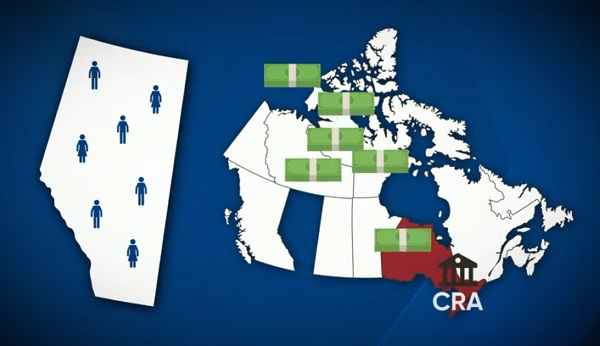Alberta
Watch Premier Kenney release details on Alberta’s COVID cases

From The Province of Alberta
COVID-19 modelling data released
Modelling projections for COVID-19 highlight the importance of continuing aggressive countermeasures to protect the lives and livelihoods of Albertans in order to stop the pandemic and restart the economy.
Alberta Health’s modelling projections indicate total cases range from 800,000 to one million infections, from mild and undiagnosed to detected, confirmed and treated, under two provincial scenarios. The Government of Alberta is advising that existing public health orders could be in place until the end of May to protect the health and safety of Albertans.
“I know these numbers can be overwhelming. But these models are not a done deal. I want Albertans to see them as a challenge. Perhaps the greatest challenge of our generation. The modelling helps us anticipate and prepare for the demands on Alberta’s health-care system so we can ensure we are prepared to support patients at the peak of the pandemic and beyond.”
Both scenarios estimate that after the virus reaches its peak, the number of cases will decline over the summer months. Without any provincial interventions to manage the pandemic response, projections show that about 13,000 Albertans could have been hospitalized with 3,900 requiring intensive care.
“COVID-19 presents an unprecedented challenge to our healthcare system. Our government has taken and continues to take aggressive measures to make sure the health-care system is ready”.
The modelling helps us anticipate and prepare for the demands on Alberta’s health-care system. Alberta Health has been scaling up the capacity of the province’s health care system by expanding the capacity of hospitals, opening up more acute care beds, intensive care unit spaces, and ventilators. These measures will ensure that under both provincial scenarios, our health-care system is prepared to support patients at the peak of the pandemic.
“We are actively increasing capacity in Alberta Health Services facilities by postponing non-urgent surgeries and diagnostic imaging, reducing a number of non-emergency services offered in hospitals, relocating patients to continuing care spaces where possible, and enhancing the use of videoconferencing and telephone care to connect physicians and health professionals with patients remotely. With these measures, and because of the hard work of our front-line health-care workers – our nurses, doctors and those who support them – we are well-positioned to manage the probable impacts of COVID-19 in the coming months.”
Quick facts
- The model uses several key assumptions, including:
- not all cases are detected
- transmission is more common within an age group, rather than between age groups
- there is no asymptomatic transmission
- people are infectious for five to 10 days
- all ICU patients require ventilation
- overall 14 per cent of cases are hospitalized and 5 per cent require ICU, but this varies significantly by age
- All Albertans have a responsibility to help prevent the spread. Take steps to protect yourself and others:
- Practise social distancing.
- Stay home and away from others if sick or in mandatory self-isolation.
- Practise good hygiene – wash hands often for at least 20 seconds, cover coughs and sneezes, and avoid touching your face.
- Monitor for symptoms, such as cough, fever, fatigue or difficulty breathing.
- Anyone who has health concerns or is experiencing symptoms of COVID-19 should complete an online COVID-19 self-assessment.
- For recommendations on protecting yourself and your community, visit alberta.ca/COVID19.
5 Recommendations to encourage us in the time of COVID from Dr. Abdu Sharkawy
Alberta
Temporary Alberta grid limit unlikely to dampen data centre investment, analyst says
From the Canadian Energy Centre
By Cody Ciona
‘Alberta has never seen this level and volume of load connection requests’
Billions of investment in new data centres is still expected in Alberta despite the province’s electric system operator placing a temporary limit on new large-load grid connections, said Carson Kearl, lead data centre analyst for Enverus Intelligence Research.
Kearl cited NVIDIA CEO Jensen Huang’s estimate from earlier this year that building a one-gigawatt data centre costs between US$60 billion and US$80 billion.
That implies the Alberta Electric System Operator (AESO)’s 1.2 gigawatt temporary limit would still allow for up to C$130 billion of investment.
“It’s got the potential to be extremely impactful to the Alberta power sector and economy,” Kearl said.
Importantly, data centre operators can potentially get around the temporary limit by ‘bringing their own power’ rather than drawing electricity from the existing grid.
In Alberta’s deregulated electricity market – the only one in Canada – large energy consumers like data centres can build the power supply they need by entering project agreements directly with electricity producers.
According to the AESO, there are 30 proposed data centre projects across the province.
The total requested power load for these projects is more than 16 gigawatts, roughly four gigawatts more than Alberta’s demand record in January 2024 during a severe cold snap.
For comparison, Edmonton’s load is around 1.4 gigawatts, the AESO said.
“Alberta has never seen this level and volume of load connection requests,” CEO Aaron Engen said in a statement.
“Because connecting all large loads seeking access would impair grid reliability, we established a limit that preserves system integrity while enabling timely data centre development in Alberta.”
As data centre projects come to the province, so do jobs and other economic benefits.
“You have all of the construction staff associated; electricians, engineers, plumbers, and HVAC people for all the cooling tech that are continuously working on a multi-year time horizon. In the construction phase there’s a lot of spend, and that is just generally good for the ecosystem,” said Kearl.
Investment in local power infrastructure also has long-term job implications for maintenance and upgrades, he said.
“Alberta is a really exciting place when it comes to building data centers,” said Beacon AI CEO Josh Schertzer on a recent ARC Energy Ideas podcast.
“It has really great access to natural gas, it does have some excess grid capacity that can be used in the short term, it’s got a great workforce, and it’s very business-friendly.”
The unaltered reproduction of this content is free of charge with attribution to the Canadian Energy Centre.
Alberta
Alberta Next: Taxation

A new video from the Alberta Next panel looks at whether Alberta should stop relying on Ottawa to collect our provincial income taxes. Quebec already does it, and Alberta already collects corporate taxes directly. Doing the same for personal income taxes could mean better tax policy, thousands of new jobs, and less federal interference. But it would take time, cost money, and require building new systems from the ground up.
-

 Business1 day ago
Business1 day agoCarney government should apply lessons from 1990s in spending review
-

 Business1 day ago
Business1 day agoTrump to impose 30% tariff on EU, Mexico
-

 Entertainment1 day ago
Entertainment1 day agoStudy finds 99% of late-night TV guests in 2025 have been liberal
-

 illegal immigration2 days ago
illegal immigration2 days agoICE raids California pot farm, uncovers illegal aliens and child labor
-

 Frontier Centre for Public Policy18 hours ago
Frontier Centre for Public Policy18 hours agoCanada’s New Border Bill Spies On You, Not The Bad Guys
-

 Energy1 day ago
Energy1 day agoLNG Export Marks Beginning Of Canadian Energy Independence
-

 Business5 hours ago
Business5 hours agoMark Carney’s Fiscal Fantasy Will Bankrupt Canada
-

 Uncategorized17 hours ago
Uncategorized17 hours agoCNN’s Shock Climate Polling Data Reinforces Trump’s Energy Agenda



